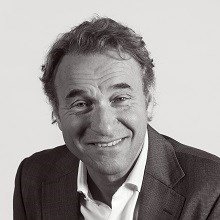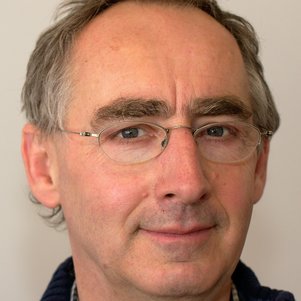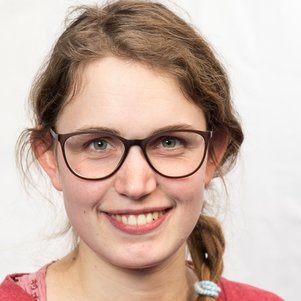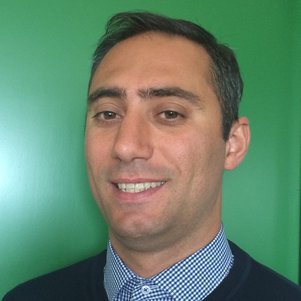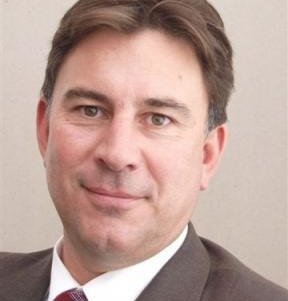Former Lunch Lectures
"Future change of wave energy resources due to climate change and sustainability assessment."
Tuesday 19 March 2019 (19/03/2019)
Location: ME Lecture room E (Robert Hooke)
To attend please register: Ocean Energy (OceanEnergy@tudelft.nl)
Abstract:
Marine renewable energy resources and especially the wave energy play a fundamental role in providing part of the energy demands in coastal areas as well as mitigating the negative impacts of fossil fuels on global warming. However, climate change affects the amount of available wave energy resources and hence, it is crucial to evaluate the climate-induced (long-term) changes of wave energy resources in order to reduce the uncertainties in estimating the future resources. High-resolution atmospheric models available from various resources provide information on different future scenarios of changing climate, and hence, future change of wave climate and wave energy can be estimated in desired areas. For this purpose, numerical modeling of wave characteristics is performed for both historical and future projections, and climate change impacts are assessed by comparing the two datasets. The wave energy and its short-term fluctuation and long-term change (due to climate change) is estimated mostly in nearshore areas, where the wave energy converters are planned to be deployed, and the most appropriate locations will be specified based on the sustainability criteria taking into both short-term variation and long-term change, in order to reduce the uncertainties for a future sustainable development.
Short Bio:
Bahareh Kamranzad is a researcher working mainly in the areas of marine renewable energies and climate change impacts. She has also worked on numerical modeling of the wave, extreme value analysis and hybrid approaches for nearshore wave modeling. She has published more than 20 journal papers on the above mentioned issues and has collaborated in several national and international projects. She is currently a faculty member and Assistant Professor at Coastal Engineering Lab, Disaster Prevention Research Institute, Kyoto University, Japan.
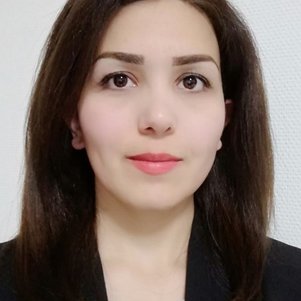
Dr. Bahareh Kamranzad
-
Kyoto University
"Heat transfer of ocean thermal energy conversion: condensation and flow patterns in PHEs" - by Xuan Tao PhD Process & Energy
"Ocean Grazer 3.0: A hybrid, modular and scalable renewable energy capture and storage device" by Antonis Vakis - University of Groningen
Monday 28 May 2018
The Ocean Grazer aims to combine wave energy converter technology with on-site energy storage and wind turbines to harvest renewable energy off shore. Each hybrid device will deliver significantly higher and continuous power output compared to separate wave or wind technology solutions. Lossless storage systems can smoothen the intermittent power output of wind and wave energy converters, offering energy buffering capabilities to satisfy energy market demand and maximize revenue. The integration of technologies and infrastructure will lead to a cost-efficient solution for harvesting multi-source offshore renewable energy. This presentation will introduce the technology and research conducted thus far at the University of Groningen, focusing on key findings relevant to sparse versus dense arrays of wave energy converters, as well as research questions that must be addressed for future development of the device and relevant technologies.
Project page: http://www.oceangrazer.com
“Tidal Bridge builds largest Tidal power plant in Indonesia.” by Erik van den Eijnden - Managing Director at Tidal Bridge
Monday 22 January 2018
Gerbrant van Vledder:
The traditional navigators of Oceania are known for their accurate island finding skills using only traditional means while those of the Marshall Islands exhibit additional skills of reading ocean waves for navigation purposes. Long-travelled swell waves are used as a background signal to hold course. Around islands they can detect the presence and direction of islands, even when they are still behind the horizon. This art requires a thorough knowledge of the oceanic wave environment and the interaction of waves with the sparsely located coral islands. In this presentation I will explain the evolution and structure of ocean wave fields and their use for navigation purposes as well as the reasons why this art has risen to such heights especially around these islands.
Biography: After obtaining my MSc and PhD degrees in Civil Engineering at TU Delft I worked at various research institutes and engineering companies (Delft Hydraulics, Alkyon, TU Delft, Arcadis, and BMT ARGOSS) in the field of numerical modeling of ocean waves. Presently, I have my own consulting company on wave prediction and hydraulic research, as well as being guest researcher at the Section of Environmental Fluid Mechanics of TU Delft. My work is a mix of research, concerning the generation and prediction of ocean waves, and consultancy to advice on the impact of these waves on coastal structures. In 2015 I participated in a scientific expedition to the Marshall Islands organized by the University of Hawaii to study the almost lost local art of wave piloting. The aim of our international research group is to understand these techniques using our current scientific knowledge and to preserve this art for future generations. Maria de Jong:
Oceanographic features in the Caribbean Sea, such as currents and temperature distribution, can affect offshore Ocean Thermal Energy plant structure and performance. The patterns, variability and forcing mechanisms of these features are determined based on ten years of model data from the Mercator Ocean Model. Coastal upwelling, subsurface countercurrents and intra-annual variability play a major role in the Caribbean region.
Biography: After successfully finishing the bachelor Maritime Engineering at the TU Delft, I chose to start the master Offshore and Dredging Engineering. This originated from my passion for renewable ocean energy. Therefore, I frequently attended these Ocean Energy Lunch lectures as a student. I graduated at Bluerise, a company developing Ocean Thermal Energy solutions. From model data, I determined ocean current and temperature patterns in the Caribbean Sea. In the lunch lecture, I will present some interesting parts of this research.
'Ocean energy research. Navigating through the policy and networking sea'
27 November 2017
Watch the lecture via Collegerama here.
Watch the presentation here.
Ocean energy is an emerging sector. This is one of the most commonly used sentence to describe the promises, potential and perhaps the shortcoming of ocean energy over the past decade. The sector is somewhat behind where many would have expected it to be, yet it is making clear progress and political support is strong throughout Europe. There's a newly found optimism about the development of Ocean Energy, with a clear vision of the challenges ahead and of the necessity of cooperating among stakeholders to overcome them. In this presentation I'll provide an overview of the challenges ahead for the ocean energy sector, how policy and research can interact, and what's the role of networking in forging and driving the sector forward. I will address how participating in INORE has impacted my personal development and how, what lessons can the sector take on from professional networking.
Davide Magagna is a scientific officer at the Joint Research Centre, the European Commission's science and knowledge service. Davide has graduated from the University of Southampon (UK) with a Ph.D. in ocean energy, topic that has been and still is at the core of his research and policy activity. Currently Davide undertakes techno-economic assessment of ocean energy technology and market supporting European policies aimed at bringing ocean energy into the energy system. Davide currently sit on the IEA – Ocean Energy System Executive Committee and previously been a member of the Inore Executive Committee.
"IRENA: Ocean Energy an Enabler of Environmental and Economic Development of SIDS"
23 October 2017
Watch the lecture via Collegerama here.
This event provided a comprehensive update on the status and deployment opportunities of ocean energy technologies aiming to raise awareness and triggered engagement to explore the potential and accelerate the deployment of ocean energy and other renewable energy technologies and to advance the global climate agenda.
Dr. Roland Roesch is Senior Programme Officer - RE Markets and Technology Dialogue at International Renewable Energy Agency (IRENA). Before Roland became in October 2010 a Professor he worked for 15 years in the Oil&Gas and Utilities Industry for Shell and E.ON in his last position as General Manager Power at Shell and for E.ON as Head of Division, Project Leader, Project Executive and Technical Project Developer. Before he joined E.ON he worked as Energy Market Consultant for Lahmeyer International and as researcher for renewable energies. Roland has solid business experience in energy markets, energy economics and energy strategies, renewable integration management, energy project development and project financing. He currently leads amongst other the IRENA Renewable Energy Project Development Guideline initiative known as IRENA Project Navigator and IRENAs work related to Renewable Energy Technology Innovation.
"Can we make tidal energy economical?"
26 June
Compared to other renewable sources of energy, tidal energy is highly predictable. Tidal stream turbines are likely to prove more cost-effective, and have minimal impact on the local marine biodiversity compared to the tidal ranges (or dams). However, the levelized cost of energy (LCOE) from tidal stream turbines is far higher compared to the grid average, and needs to be brought down significantly to make energy generation from tidal turbines an economically viable option.
The main objective of the TIPA (Tidal turbine Power take-off Accelerator) project, led by Nova Innovation Limited, is to design and demonstrate a next-generation cost-effective and reliable power take-off (PTO) system for tidal stream turbines. In addition to Nova Innovation and TU Delft, other partners include University of Edinburgh, RWTH Aachen University, Siemens, SKF and Wood Group.
The aim is to reduce the LCOE of tidal power by 20% compared to present market values. The three main strategies to achieve this are:
- By improving performance and efficiency over the existing conventional PTO by using a direct drive generator, eliminating losses due to a gearbox.
- By improving the reliability of the system so that the service and maintenance interval is increased beyond 2 years.
- By ensuring that the device has an expected lifetime of >20 years by subjecting it to accelerated lifetime testing prior to deployment.
In this talk, Faisal Wani shall briefly present the state-of-the-art in the tidal turbine industry, and the current challenges faced by the tidal turbine manufacturers in their efforts to economically exploit tidal energy. The focus of the talk shall be to present the recent trends adopted in the industry to increase the efficiency, reliability and survivability of the tidal PTO systems. Faisal Wani is currently pursuing his PhD in Electrical Sustainable Energy Department at the Faculty of Electrical Engineering, Mathematics and Computer Science, TU Delft. His supervisors are Dr. ir. H. Polinder and Prof. dr. J. A. Ferreira.
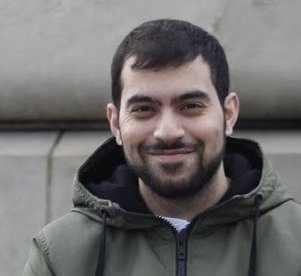
Ir. Faisal Wani
TU Delft PhD candidate
"Wave energy research and development, in a 40 years perspective"
22 MAY
The energy crises in 1973 when cars were not allowed to drive on Sundays in Denmark made a strong impression on me and new ways to generate power independent of oil was in the back of my head during my years of studies at the Technical University of Denmark.
One day in 1977 we had a lecture on water turbines in a course on hydraulics. We were taught that water turbines could produce power proportional to the flow times the height of the waterfall – quite simple and easy to visualize - what a pity Denmark is flat and without any water falls I thought. During the night I woke up with a vision of a water head equal to the water depth over the seabed
- could the water pressure at the seabed be used to drive a turbine? The ocean waves on the sea surface appeared in my mind
- could the surface waves activate pumps and create a flow through the turbine?
I made a few drawings of wave pumps and some simple calculations on how much power could be generated. I studied at the department of ocean engineering and I had planned to design a sailing boat. However my teacher was not that impressed – don’t you have some other topic you could work on? – Well - I had to confess, I had an idea on how to generate power from waves. There you see he said - not everybody has such an idea, so why don’t you start working on that idea - I did.
This lecture will outline the developments in Wave Energy in this 40 year perspective.
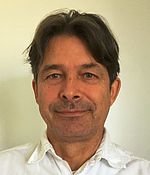
Ir Kim Nielsen
Ramboll Offshore Wind
"Ocean Energy - EU Policy perspectives"
24 April
The high level targets for the ocean energy sector are to bring ocean bring ocean energy to commercial deployment, to drive down the levelised cost of energy (LCoE), to maintain and grow Europe’s leading position in ocean energy and to strengthen the European industrial technology base, thereby creating economic growth and jobs in Europe and allowing Europe to compete on a global stage. But to reach these high level targets still many steps in Research and technology development are needed. In this lunch time lecture attention will be given to the European Commission's activities (Energy Union, SETplan, Horizon 2020 EU projects, Ocean energy Forum) related to Ocean Energy, and its perspective on the challenges ahead and need for research and development in order to accelerate its implementation.

Dr.ir. Matthijs Soede
"Transition to 100% renewable energy on islands in the tropics"
27 March
Tropical islands have great access to traditional renewable energy sources, like wind and solar energy, and a high sense of urgency to make a transition. Therefore they can become the global frontrunners in the transition to 100% renewable energy. So what are we waiting for?
Unfortunately islands often don't have the luxury of an interconnection to a large grid and the lack of effective storage solutions limits the penetration of intermittent wind and solar energy. Also, space requirements of these renewable energy technologies make a widespread deployment on many islands unfeasible. So, is it possible to reach 100% renewable energy on islands?
In this lunch lecture Msc. Anne-Marije Zwerver will take you along in the transition to 100% renewable energy. She will explain the potential of integrating ocean energy in the energy mix of tropical islands and demonstrate it with a case study

Ir. Anne-Marije Zwerver
Abstract
27 Jan
How to make the offshore industry sustainable? What challenges do we face and to which one should we respond? How the social media can be employed for soliciting ideas globally? What is Our Ocean Challenge? What are examples of submitted solutions? What next? are examples of questions which Mirek will answer in the first part of his lecture. He will continue with sharing his experience with contributing to OOC and repeat his call for action. Finally, he will present an idea of how the offshore industry can preserve the existing global hydrocarbon-driven transportation means and infrastructure and, in the same time, can lower the global emission of carbon dioxide.

Prof.dr.ir. Mirek Kaminski
"Tidel Energy at the Fluid Mechanics department of the CiTG Faculty"
23 Jan
The NWO project aims to provide in insight in hydro-dynamical effects of Horizontal Axis Tidal Turbines (HATTs) in complex geometries, by setting up an accurate numerical model. The model should link the turbulent flow through a hydraulic geometry featuring HATTs and basin scale flow. The modelling choices will be based on an experimental and numerical investigation of HATTs. The project focusses on the situation near the Eastern Scheldt storm surge barrier (The Netherlands), where in November 2015 five HATTs are implemented. Partners in this research are: Rijkswaterstaat, Tocardo International BV, Blue Turbines BV, Deltares, Tidal Testing Centre, Witteveen+Bos BV and Svašek Hydraulics BV. The project runs from 2016 to 2020.
Merel Verbeek does her PhD at the Fluid Mechanics department of the Civil Engineering Faculty, her supervisors are Dr.ir. R.J. Labeur and Prof.dr.ir. W.S.J. Uijttewaal.
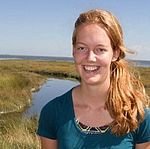
Merel Verbeek
PhD candidate
"Floating wind turbines: the future of wind energy?"
28 Nov
Offshore wind energy is growing fast, with more farms installed in increasingly deeper waters and farther from the shores. Today, all commercialised offshore wind turbines are directly mounted on the seabed. This is economically viable in waters typically shallower than 60 meters. Beyond this depth, floating wind turbines moored to the seabed could be an attractive solution to decrease cost.The development of the world's first floating pilot wind park off the coast of Scotland confirms that floating offshore wind energy is technologically feasible. However, it presents new technological challenges compared to fixed-bottom wind turbines. This lecture will give an overview of the main challenges when developing floating wind turbines and some recent research on the development of high-fidelity numerical tools to model their dynamics.
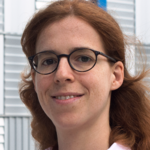
Axelle Viré
Assistant Professor Wind Energy Faculty Aerospace Engineering
24 Oct
For over 10 years Knowledge Centre WMC has been performing research and services for the wind industry. This experience is now being used in research on ocean current turbines as well. The presentation will treat the following subjects:
- Full-scale testing of tidal turbine blades
- Experimental/numerical characterization of hygrothermal ageing in composite laminates
- Simulation of loads on ocean current turbines with the FOCUS6 software package.
Remco Brood
-
The Knowledge Centre Wind turibne Materials and Constructions
Dutch Marine Energy Centre
26 Sept
In the transition to a clean energy future, it is essential to develop and mobilize all forms of renewable energy in a competitive and sustainable manner. Marine energy is a renewable resource which generates energy from marine sources and has a tremendous potential to contribute to the global energy mix. In order to unleash this potential, all players in the marine energy sector should work together to lower existing barriers in technological development, product demonstration and commercialization.

Carlette Nieland
Tidal Testing Centre TTC
"Ocean Energy at Deltares"
27 June
In this lunch lecture, Anton de Fockert will give an overview of recent developments in various fields of marine renewable energy (MRE) at Deltares. The focus will be on tidal energy. Wave energy, OTEC and salinity gradient energy (blue-energy) will also be mentioned. The aim of our research is to develop tools to estimate the impact of MRE farms on the environment, and to optimize the energy production of the farm. The first step concerns the hydraulic conditions, which provide input for the design of the MRE device, and for the environmental impact studies (ecology, sediment, etc). The overview includes the typical techniques used and the challenges that are faced in these fields.
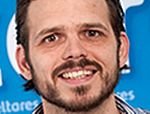
Anton de Fockert
Deltares
"Oceans of Energy: Renewable Energy Solutions for Islands "
30 May
The presentation will tell how 12 strong offshore & dredging companies and institutes, including Damen, Bluewater and van Oord, joined forces in a fantastic collaboration to develop the first BlueTEC floating tidal energy system, build it in the Netherlands and installed near Texel in 2015. During the second half of 2015 and the first quarter of 2016, it was the only installation in the world at full sea that was producing electricity from the tides into an onshore grid.
It will conclude by looking forward how a new company founded recently has the mission to bring clean energy to the world, it aims to employ professionals of the offshore oil&gas industry who want to use their use their skills and experience to develop clean energy solutions. The company’s name, Oceans of Energy, refers to the unlimited amounts of clean energy that can be generated from sun and wind, as well as its specific skills in ocean energy.
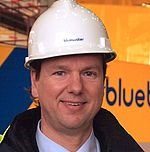
Allard van Hoeken
Oceans of Energy BV
"Experimental modelling of offshore renewable energy "
25 April
For over 80 years, MARIN has been contributing to the development of safe and economic ships and offshore structures as independent advisor in hydrodynamic and nautical research. This is done through model tests, simulations, desk studies, full-scale measurements, safety studies and training. At the same time MARIN considers it her responsibility to contribute to the development of offshore renewable energy from waves, tide and wind. For this MARIN launched RENT (Renewable Energy Team), a MARIN-wide team of specialists covering all the aspects needed to make offshore renewable energy a success.
Besides involvement in offshore wind, the RENT team is involved in the hydrodynamic design of wave and tidal energy for which the challenges are very similar to those of the offshore industry: safe and economic design, production, transportation, installation, maintenance, repair and removal. The presentation will give an overview of experimental modelling at MARIN of wave, tidal and floating wind energy.
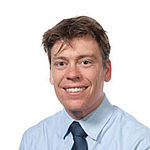
Erik-Jan de Ridder
MARIN
Introduction to Tocardo Tidal Projects and Turbine Design
21 March
TOCARDO International BV is a Netherlands based tidal - and river turbine manufacturer which technology has been demonstrated since 2008. In 2015, the Den Oever-based company installed a 1.2 MW array of 5 T2 turbines in the Eastern Scheldt (Oosterschelde) storm surge barrier, part of the famous Dutch Delta Works. Earlier that year, three linked turbines were installed in the Afsluitdijk, a 30 km long primary sea defense in the Netherlands, with a total capacity of 300 kW while another turbine in the Afsluitdijk has been providing electricity for over seven years now. Its first offshore floating project at the Island of Texel in The Netherlands has been deployed as well. Tocardo’s technology stands for robustness, reliability and simplicity.
This presentation will give an introduction to Tocardo’s Tidal Projects as well as the design and operational features of a Tidal Stream Turbine. The design of a tidal turbine is governed by the consideration that it has to operate in a submarine environment where maintenance is very difficult. Hence, its components should be made as simple as possible. Other challenges include for instance the relatively low inertia of a tidal turbine compared to the mass of water flowing through the rotor which makes the rotor spinning velocity follow water velocity fluctuations very rapidly. The goal of the presentation is to shortly explain the design philosophy and to highlight the challenges met and the trade-offs included in the design of a tidal turbine.

Dimitrios Papaoikonomou
Marine Plant Biomass
22 Feb
Traditional agricultural soils become exhausted, and more humans have to be fed with high value proteins and enough energy for a comfortable life. Marine microalgae, seaweeds and salt-tolerant landplants grow on solar energy, CO2, dissolved inorganic nutrients in seawater, and produce valuable biomass and oxygen. Oceans and seas on earth offer many possibilities for a truly sustainable and efficient production of plant biomass, that can be used as source for food, feed, chemicals and energy. Before this scenario can come true, many questions have to be answered such as how much marine plant biomass can be produced, how can that be done in an ecologically right manner and how can we select more productive strains. Answering these question opens the way for a very attractive perspective: valuable plant food production, cleaner seas and oceans, increased marine biodiversity and an (almost) unlimited source of CO2-neutral energy. It is a major scientific and societal challenge to collect physiological, ecological and genetical fundamental scientific knowledge and to share this with companies. Thereby enabling a transition to a marine bio-based economy.
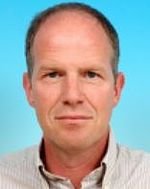
Professor Klaas Timmermans
-
NIOZ Royal Netherlands Institute for Sear Research / University Utrecht
The S3: a fully flexible wave energy converter based on electroactive polymers
25 Jan
AbstractOcean waves comprise high energy levels, which have inspired many people to invent mechanical devices to harvest wave energy. The first generation of wave energy converters have had a number of forms, but all are essentially large steel structures concentrating the power take off onto small mechanical devices. A number of prototype devices have been installed offshore, but due to their high fabrication and installation costs, coupled with significant maintenance requirements, the production of electricity at an acceptable cost has remained elusive. To avoid the limitations of these devices, a second generation wave energy converter is being developed using electro active polymers (EAP), which are capable of generating electricity directly from wave action without the need for any mechanical power take off. The resulting system is flexible and possesses an infinite number of degrees of freedom, allowing wave energy to be captured more efficiently than with conventional devices. Deployed offshore, such a device would have no complex mechanical parts, would function silently, and would require minimal maintenance. The economics of such a system lead to predictions of a cost of electricity significantly below the levels of the first generation devices. The talk will address the principles of energy conversion using EAP, the application of EAP to wave energy conversion and highlight the positive impact on the economics of wave energy conversion by involving this new type of smart materials.
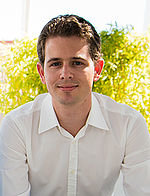
Rick van Kessel M.Sc.
The symphony wave energy converter - "a continuing story"
23 Nov
Teamwork Technology developed several sustainable energy technologies. Amongst them is wave energy. Until 2009 they were responsible for, The Archimedes Waveswing, a project that was started in 1993. It was installed at full scale in Portugal. Recently we renewed our interest in wave energy. By introducing the Symphony wave power technology, a new project is started.

Fred Gardner
Energy harvesting through vortex-induced-vibration
26 Oct
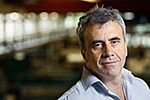
Prof. dr. A.V. Metrikine
Marine Energy: status, challenges, vision
28 Sept
Peter Peter Scheijgrond is one of the ambassadors for the international ocean energy sector having worked in this field for over 18 years and bringing cohesion and cooperation in the ‘energy from water’ sector. He is one of the founding board members of the Dutch Energy from Water Association (EWA) and an acting observer to the Implementing Agreement on Ocean Energy Systems of the International Energy Agency (IEA-OES). He currently chairs the IEC TC-114 Dutch mirror committee on the development of new standards for marine energy convertors. While his primary experience and expertise lies in the development of tidal stream, tidal barrage and wave energy projects, he has also been involved in hydropower, OTEC, aquatic biomass and Salinity Gradient projects and studies.
Through his own company MET-support (Marine Energy Technologies support), he currently works for Bluewater Energy Services on the development of a floating structure for tidal turbines, for Tidal Testing Centre (TTC) on site development and permitting, and he is secretary to the EU EIP Action Group on Energy from Water Works.He holds engineering degrees from the University of Glasgow, the Glasgow School of Art, Strathclyde University and University of Applied Sciences Groningen. Previously with Ecofys, over a period of 12 years he developed and demonstrated the Wave Rotor technology. As part of a spin-out company OceanMill, the Wave Rotor technology and rights were sold to offshore contractor IHC in 2012.
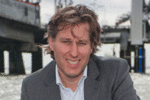
Ir. Peter Scheijgrond
Analysis of Ocean Thermal Energy Conversion operation
22 June
Ocean Thermal Energy Conversion (OTEC) is a method for generating electricity using the temperature difference between the hot surface water and the cold deep water in the ocean. OTEC is capable of generating electricity day and night, year-round. The technology is viable primarily in equatorial areas where the year-round temperature differential is at least 20 degree Celsius. Next to producing electricity, OTEC also offers the possibility of co-generating other products, like efficient seawater air-conditioning (SWAC), fresh water and nutrients for fish farming and algae production.
During the colloquium, Dr. Carlos Infante Ferreira will share some of the ongoing OTEC research at Process & Energy and opportunities for new research. TU Delft MSc graduate student Vilborg Gudjonsdottir will introduce her research on the theoretical modelling and experimental testing of the OTEC system in off-design conditions, which is under supervision of Dr. Carlos Infante Ferreira and part of her Master in Sustainable Process & Energy Technology (SPET).

Dr.ir. Carlos Infante Ferreira


